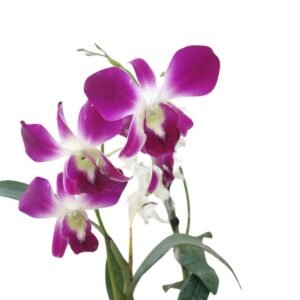“Happiness is having plants to care for”
Are you looking to add a touch of nature to your living space? Planting flowers indoors can not only brighten up your home but also provide therapeutic benefits. This guide will walk you through the steps of planting flowers indoors, ensuring a successful and vibrant garden.
Choosing the Right Flowers
- Indoor-friendly plants: Opt for flowers that are suitable for indoor environments. Consider their light requirements, humidity needs, and susceptibility to pests. Popular choices include African violets, orchids, and peace lilies.
- Low-maintenance options: If you’re a beginner, start with plants that are relatively easy to care for. These might include snake plants, spider plants, or succulents.
Selecting the Perfect Pot
- Drainage: Ensure your pot has drainage holes to prevent root rot.
- Size: Choose a pot that is slightly larger than the root ball of your plant.
- Material: Consider the aesthetics and weight of the pot. Terracotta pots are classic, while plastic pots are lightweight and often come in various colors.
Preparing the Soil
- Potting mix: Use a well-draining potting mix specifically formulated for indoor plants.
- Fertilizer: Incorporate a slow-release fertilizer into the soil to provide essential nutrients for your plants.
Planting Your Flowers
- Remove the plant: Gently remove the plant from its nursery pot.
- Loosen the roots: Carefully loosen any tightly packed roots to encourage healthy growth.
- Place in the pot: Place the plant in the center of the pot and fill in the surrounding gaps with potting mix.
- Water thoroughly: Water the plant thoroughly to ensure the soil is evenly moistened.
Providing Optimal Care
- Light: Place your plants in a location that receives the appropriate amount of sunlight. Some plants require direct sunlight, while others prefer indirect light.
- Watering: Water your plants regularly, but avoid overwatering. Check the soil moisture before watering by sticking your finger about an inch deep.
- Humidity: Many indoor plants prefer higher humidity levels. Consider using a humidifier or misting your plants regularly.
- Fertilizing: Feed your plants with a balanced fertilizer every few weeks during their growing season.
Troubleshooting Common Issues
- Pests: Keep an eye out for common indoor plant pests like aphids, mealybugs, and spider mites. Treat them promptly with appropriate insecticides or natural remedies.
- Diseases: Prevent diseases by ensuring proper air circulation and avoiding overwatering. If you notice signs of disease, isolate the affected plant and seek advice from a gardening expert.
Enjoy Your Indoor Garden
With proper care and attention, your indoor garden will thrive and bring joy to your home. Experiment with different plants, and don’t be afraid to try new techniques. Your indoor oasis will become a beautiful and rewarding addition to your living space.



